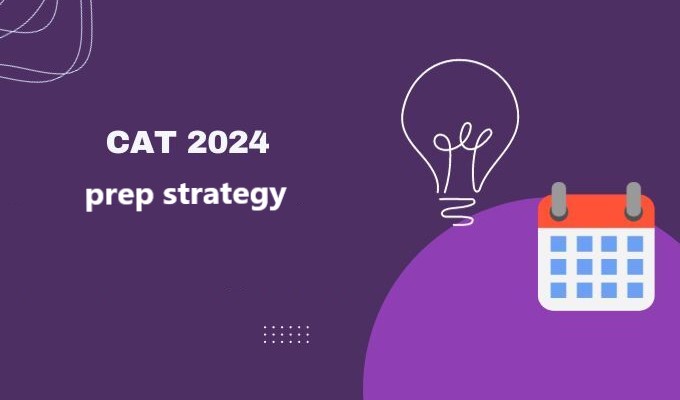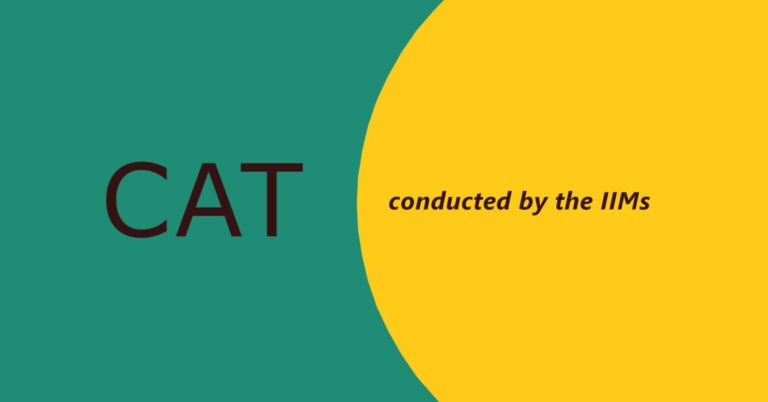CAT 2024 – a 9 month journey
Expected format of CAT 2024
| Duration | 2 hours (with designated time-slots) |
| Number of Questions | 66 |
| Question Types | Multiple Choice Questions (MCQs) and Type in The Answer (TITA) Questions |
| Sections | 1. Verbal Ability and Reading Comprehension (VARC) 24 questions |
| 2. Data Interpretation and Logical Reasoning (DILR) 20 questions | |
| 3. Quantitative Ability (QA) 22 questions | |
| Marking Scheme | +3 for each correct answer, -1 for each incorrect answer (for MCQs), 0 for incorrect TITA questions only |
How to prepare for CAT 2024
With another 9 months left for CAT 2024 (expected to be held towards the end of November’19), how should you start your preparation? We know that the CAT tests skills in three areas – Quantitative Aptitude, Logical reasoning & Data Interpretation, and Verbal Ability.
Thus, to excel in this test, you need to devote time equally to each of the three areas. How to effectively do that is what we will discuss.
Take stock of the situation
Those who have already started preparing for CAT 2024 sometime back, would be aware of exactly what sort of skills are required to excel in these three areas. They would also be aware about which area they are particularly weak in. Needless to say, you need to devote the major part of your preparation to overcome your weaknesses.
However, those who have decided to start just now for CAT 2024, don’t worry! You are not late in starting your preparations. But, first you need to understand what you need to study, isn’t it?
To do that, take up any past years’ question papers or a diagnostic test and go through the questions to have a fair bit of idea as to what you can expect in the exam. It is worthwhile to note that all other exams, like XAT, NMAT, SNAP, IIFT have a very similar ‘syllabus’ as that of CAT.
Take the first few steps
Once you are acquainted with the syllabus, you are ready to start your prep. But how? The preparation strategy for each section is different. Let us discuss one by one:
Verbal Ability
You should typically start doing the following activities simultaneously for your CAT 2019 preparation:
- Start reading English newspapers – read all the relevant news articles and the editorials. The benefits are four-fold:
- You get to know about all relevant current affairs (note that some exams, like IIFT, XAT have a separate GK section)
- You get good reading practice. Whenever you read an article, try to summarize it on a piece of paper and see how much of it you retain. In Reading-Comprehension, a main question type in the Verbal section, retention skills are very valuable
- You improve your vocabulary – whenever you come across words whose meanings you do not know, make a conscious effort to note those down
- You get clarity of thought of the author (when you read editorials) – this helps in understanding the flow of the passage
- Read novels – this vastly helps you to improve your language skills
- Subscribe to International dailies online (say, on Facebook), for example The Economist, BBC news, Wall Street Journal, etc. They present articles on a wide variety of topics. Remember that you can get Reading comprehension passages on politics, economics, philosophy, and even science. So it is best to read all sorts of topics.
- Solve Reading comprehension passages from past CAT papers, preferably from CAT 2010 onwards.
- Get hold of the book – Dictionary of common errors – Longman publication, to get a very good grasp of common grammatical and word usage errors and how to rectify those.
Logical Reasoning
This section deals with solving a variety of logic based questions – puzzles, seating arrangements, matrix arrangements, and so on. The best way to prepare for this is to practice questions on this topic. The best place to get questions on this topic is the book – The Great Book of Puzzles and Teasers by George J Summers.
You would be surprised to know that a large number of logical reasoning questions asked in various exams are adapted from this particular book.
At the same time, you should keep solving logical reasoning sets from past question papers. The questions asked in SNAP, IIFT and NMAT are usually on the easier side while those asked in XAT and CAT are usually the tougher ones. So initially you can start with the easier questions and gradually move on to the tougher ones. This practice would be definitely beneficial for you in your preparation for CAT 2019.
Data Interpretation
Contrary to popular belief, this question type does not necessarily have a lot of calculations. It is more on interpreting and analyzing data rather than performing calculations. The idea is to find patterns in data provided in forms of line graphs, bar graphs, pie charts and table formats. You first need to find which data areas required to answer a particular question. Accordingly, you have to focus on that part and solve the problem.
Based on the latest patterns (last 7-8 years), CAT no longer asks questions that are purely DI or purely LR. The questions are a kind-of mix of both – i.e. logic based and at the same time, with data in them. Thus, it is expected that CAT 2019 would also be on similar lines. Hence, solving the past 8-9 years’ questions is an absolute must if you need to do well.
Quantitative Ability
Focus on the basics. The syllabus consists of Arithmetic, Algebra, Geometry, Numbers, Sets, Permutation, Combination and Probability. Many questions in CAT are from the topics – Arithmetic, Algebra and Geometry. Though in the recent past the main focus had been arithmetic, CAT 2023 had many questions from algebra. Thus, you should definitely focus on these areas for CAT 2019 as well.
While preparing for the Quantitative Ability section, keep in mind the following:
- You should focus on the basic concepts and make sure that those are absolutely clear. Understand that the sections in Arithmetic – percentages, averages, ratios and rates (work and distance) are closely linked. Also, remember that concepts of percentages and ratios would also be required in data interpretation.
- Do not memorize unnecessary complicated formulae targeting specific question types. In the CAT, rarely will you get questions where you can use such formulae catering to specific types of questions. It is much better to apply basic concepts to solve the questions instead.
- You should practice a wide variety of questions. You can start with basic practice and gradually move on to tougher questions. The best source for such questions is – as you might have guessed by now – past year question papers.
So, essentially
This may seem a bit of a daunting task, especially when you have just started your preparations. Make sure that you give equal importance to each of the three sections in your preparation plan. If you are starting off now, ideally invest 2 to 3 hours daily to avoid a rushed up preparation later.
Also you should remember to take a sufficient number of mock tests to check how your preparation is shaping up. We, at OneClickPrep make sure that the preparation for these exams is customized to the needs of each of our students. We follow an in-depth course curriculum. Our mentors have decades of experience and have themselves cracked these exams with 99.9+ percentile scores multiple times. Learning from such mentors would make the learning process very simplified.
For any queries regarding the courses, feel free to talk to our mentors. You may book a free counseling session and reach us at +919433063089. Know what our students have to say about us. Read their success stories!






